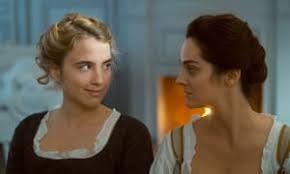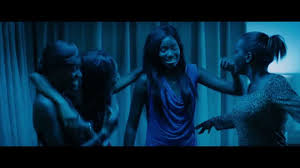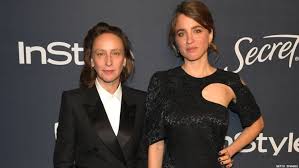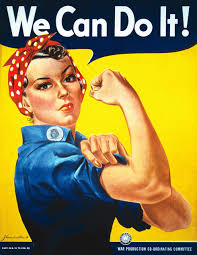Posts Tagged Ada Lovelace
Choices and Chances: International Women’s Day, 2020
Posted by cathannabel in Feminism, Film, History, Literature on March 8, 2020
#IWD2020 #EachforEqual
An equal world is an enabled world. How will you help forge a gender equal world?
Celebrate women’s achievement. Raise awareness against bias. Take action for equality.
A number of things I’ve read or watched just recently have made me ponder the importance of choice in relation to equality. How women across the centuries have been deprived of real choices – and still are.
Re-reading Hilary Mantel’s Bring up the Bodies, in prep for the third volume of her Cromwell trilogy, I thought about the two queens, Katherine and Anne. Powerful women, women with influence, women with resources. And yet – their power, their influence, their resources were entirely dependent upon men: fathers, husbands and, in a different sense, sons. Their fortunes changed on the whim of a man, and there was nothing they could do about it: rejected, humiliated, and in Anne’s case, killed.
Fast forward to the late eighteenth century and the women portrayed in Celine Sciamma’s wonderful new film, Portrait of a Lady on Fire. Héloise is wealthy and privileged. But she has only two choices – the convent or a socially and economically useful marriage. Her elder sister had taken her own life rather than face the latter, and so Héloise must leave the convent and be marketed to potential suitors. There’s a lot to say about this film, about how it doesn’t just subvert the male gaze, it totally obliterates it. We see the women (and there are only a few men on screen, all briefly, all unnamed) through women’s eyes. Heloise seeing herself in the portraits that Marianne paints of her. Marianne’s self-portrait. Marianne surreptitiously glancing at Héloise as she must try to fix her features in mind, in order to paint her without asking her to pose. The two gazing at each other as they realise their mutual desire. Marianne turning, at Heloise’s request, for one last look as she must say goodbye. This is a film I will want to watch and re-watch. (And I was kind of chuffed to read that Sciamma is a huge fan of Wonder Woman – an actual auteur who doesn’t despise it as a superhero blockbuster but recognises its real power and importance.)
Arnold Bennett’s Hilda Lessways is the subject of volume 2 of his Clayhanger trilogy, written in the early years of the twentieth century but set in the 1880s. What’s remarkable is the way in which we are, throughout the novel, in Hilda’s thoughts, seeing everything through her eyes, knowing only what she knows, as she rages against the restrictions of her life, struggles to understand her own emotions, to understand what choices she has, and to face the implications of the choices she has made. She is independent in spirit, she makes her own living for a while (the only female shorthand writer in the Five Towns), but she’s trapped nonetheless. It’s a vivid and moving portrait.
The young woman at the heart of Celine Sciamma’s 2015 film, Girlhood (Bande de filles) rages too. Marieme hasn’t got good enough grades to get to high school so the only option is college for vocational studies. That would mean leaving home though, which her controlling older brother would be unlikely to permit, and which would leave her younger sisters vulnerable. Her attempt to escape her brother’s control simply put her in the power of another man, and her boyfriend offers only a different kind of trap – marriage and babies.
The power in this film lies in its contrasts. We first meet Marieme as she plays American football, an Amazon, powerful in her armour. The girls head for home, all talking at once, laughing and loud and proud. But as they approach home, we see the young men waiting for them, sentinels, and the girls fall silent. We see Marieme taking on the maternal role with her younger sisters, we see her cowed by her brother’s bullying, we see her talking to a young man, all lowered eyes and fleeting glances. Girls together can be joyous (dancing to Rihanna, in shoplifted dresses, looking glamorous just for themselves rather than for a man, high on cheap booze and weed) or threatening (showdowns, mainly verbal but spilling into violence) with other groups of girls, extorting money with threats. These shifts are jarring, troubling. They show us what these young women could be (for good or ill), and what stops them from being what they could be.
So my 2020 heroes are Celine Scammia and Adele Haenel (for Portrait of a Lady on Fire, and for protest at the Césars), Greta Gerwig for making a book that I’ve read dozens of times fresh and powerful.
Elizabeth Warren for persisting. The Doctor, Ada Lovelace, Noor Inayat Khan and Mary Wollstonecraft Shelley.
And those we’ve lost: Rosalind Walter (Rosie the Riveter), Heather Couper (probably the first female scientist of whom I was aware), Kathryn Cartwright (blogger, ambassador for the Anthony Nolan Trust), Katherine Johnson (NASA mathematician).
And two young women who could change the world, and who clearly terrify those who really don’t want it to change…






























